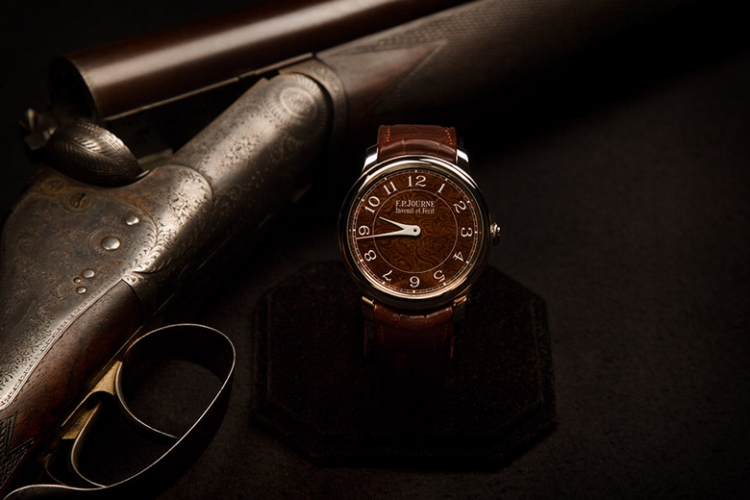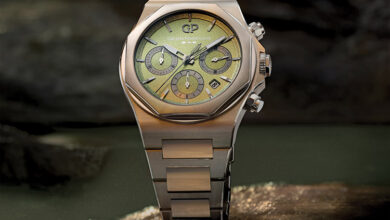F.P. Journe unveils Chronomètre Holland & Holland
The exclusive Chronomètre Holland & Holland is a masterpiece that showcases the skills and craftsmanship of the maisons of F.P. Journe and Holland & Holland
The joint project between the two marques owes its conception to the discovery of two antique and rare Damascus steel Holland & Holland guns, each more than one hundred years old.
F.P. Journe saw the possibility of including these barrels in a unique watch series with a powerful reference to ancient traditions dating back to 1850, while Holland & Holland was attracted by the idea of allowing two of their museum barrels of over hundred years old to be used to make magnificent haute horology F.P. Journe timepieces.

The two barrels that were registered by hand in the company’s books as Barrel No. 1382, dating to 1868, yielded 38 dials, while barrel No. 7183, dating to 1882, produced 28 dials.
Damascus steel is made using bars of two or more different types of steel, or iron steel, one having less carbon content, and forge them together into a single bar. This was done by heating, twisting, and hammering as needed, and then folding the bar, hammering, and forging it again. The process was repeated a few more times, resulting in a bar with layers of steel of different types producing the wavy lines and patterns visible due to the difference in chemical composition between the different bars used.
The technique was first called ‘pattern welding’ and was known to several cultures. The Japanese had been using it to manufacture their swords since 1100 AD, and it later spread around the world. By the early 1800s, the technique was used in England to produce high quality sporting barrels.
In order to produce the dials, the gun barrels were first cut along their entire length at the Holland & Holland factory and rolled out to form flat strips. These were cut to into smaller strips, which could then be cleaned, polished, and reduced to the required thickness.

The material was then sent to F.P. Journe’s dial makers, “Les Cadraniers de Genève” where the dials were cut out. They were sent back to Holland & Holland and “browned”, a traditional gun-making technique that helps protect the steel and highlights the wonderful patterns created during the original manufacture of Damascus barrels. Each dial thus has a unique pattern making each watch one of a kind.
The watch case obviously had to be of steel, resulting in a 39mm case with sapphire crystal and anti-reflection coating that enhances the special wave pattern of the dial.
The exclusive Limited Series Chronomètre Holland & Holland is accessible to F.P. Journe and Holland & Holland collectors through an application process.






